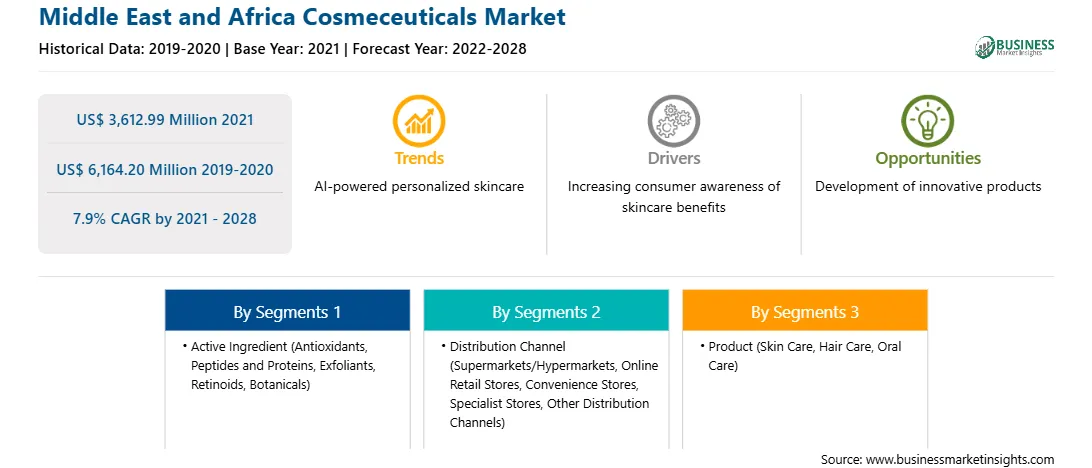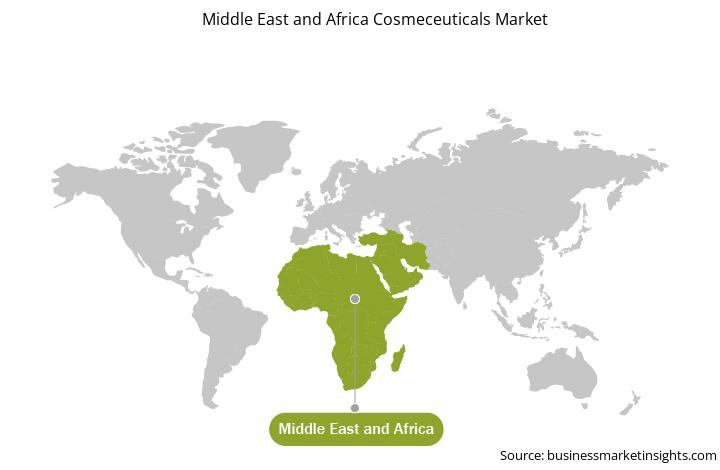The COVID-19 pandemic forced consumers to live inside the confines of homes, which enhanced digitalization over every aspect of their lives. People who were previously unwilling to adopt technology into their lives completely rely on digital technology to continue their daily activities. This dependence on technology also increased the exposure to blue light. Blue light is known to have damaging effects on the skin. This allows cosmeceutical brands to provide innovative ingredients to minimize blue light’s damaging impact on the skin. Blue light protection is one of the most anticipated and significant trends that is expected in the future. The customers want to take care of their skin, and cosmeceutical companies are here to help delay the process of skin aging. The market is expected to witness the supply of ingredients such as turmeric and algae in cosmeceutical products.
With the new features and technologies, vendors can attract new customers and expand their footprints in emerging markets. This factor is likely to drive the MEA cosmeceuticals market. The MEA cosmeceuticals market is expected to grow at a good CAGR during the forecast period.
Strategic insights for the Middle East and Africa Cosmeceuticals provides data-driven analysis of the industry landscape, including current trends, key players, and regional nuances. These insights offer actionable recommendations, enabling readers to differentiate themselves from competitors by identifying untapped segments or developing unique value propositions. Leveraging data analytics, these insights help industry players anticipate the market shifts, whether investors, manufacturers, or other stakeholders. A future-oriented perspective is essential, helping stakeholders anticipate market shifts and position themselves for long-term success in this dynamic region. Ultimately, effective strategic insights empower readers to make informed decisions that drive profitability and achieve their business objectives within the market.

| Report Attribute | Details |
|---|---|
| Market size in 2021 | US$ 3,612.99 Million |
| Market Size by 2028 | US$ 6,164.20 Million |
| Global CAGR (2021 - 2028) | 7.9% |
| Historical Data | 2019-2020 |
| Forecast period | 2022-2028 |
| Segments Covered |
By Active Ingredient
|
| Regions and Countries Covered | Middle East and Africa
|
| Market leaders and key company profiles |
The geographic scope of the Middle East and Africa Cosmeceuticals refers to the specific areas in which a business operates and competes. Understanding local distinctions, such as diverse consumer preferences (e.g., demand for specific plug types or battery backup durations), varying economic conditions, and regulatory environments, is crucial for tailoring strategies to specific markets. Businesses can expand their reach by identifying underserved areas or adapting their offerings to meet local demands. A clear market focus allows for more effective resource allocation, targeted marketing campaigns, and better positioning against local competitors, ultimately driving growth in those targeted areas.

MEA cosmeceuticals market is segmented into active ingredient, distribution channel, product and country. By active ingredient, the cosmeceuticals market is segmented into antioxidants, peptides and proteins, exfoliants, retinoids, botanicals, and others. The antioxidants segment held the largest market share in 2021. The MEA cosmeceuticals market, based on distribution channel, is segmented into supermarket/hypermarket, online retail stores, convenience stores, specialist stores, and other distribution channels. In 2021, the supermarket/hypermarket segment held the largest share of the market. The cosmeceuticals market, by product, is segmented into skin care, hair care, oral care, and others. The skin care segment held the largest share of the market in 2021. Based on country, the MEA cosmeceuticals market is segmented into Saudi Arabia, South Africa, UAE, and the Rest of MEA.
Allergan, Amway Corp., Avon Products Inc., BASF SE, Beiersdorf Global, Croda International Plc, Johnson & Johnson, L'Oreal, Procter & Gamble, and Unilever plc are among the leading companies in the MEA cosmeceuticals market.
The Middle East and Africa Cosmeceuticals Market is valued at US$ 3,612.99 Million in 2021, it is projected to reach US$ 6,164.20 Million by 2028.
As per our report Middle East and Africa Cosmeceuticals Market, the market size is valued at US$ 3,612.99 Million in 2021, projecting it to reach US$ 6,164.20 Million by 2028. This translates to a CAGR of approximately 7.9% during the forecast period.
The Middle East and Africa Cosmeceuticals Market report typically cover these key segments-
The historic period, base year, and forecast period can vary slightly depending on the specific market research report. However, for the Middle East and Africa Cosmeceuticals Market report:
The Middle East and Africa Cosmeceuticals Market is populated by several key players, each contributing to its growth and innovation. Some of the major players include:
The Middle East and Africa Cosmeceuticals Market report is valuable for diverse stakeholders, including:
Essentially, anyone involved in or considering involvement in the Middle East and Africa Cosmeceuticals Market value chain can benefit from the information contained in a comprehensive market report.